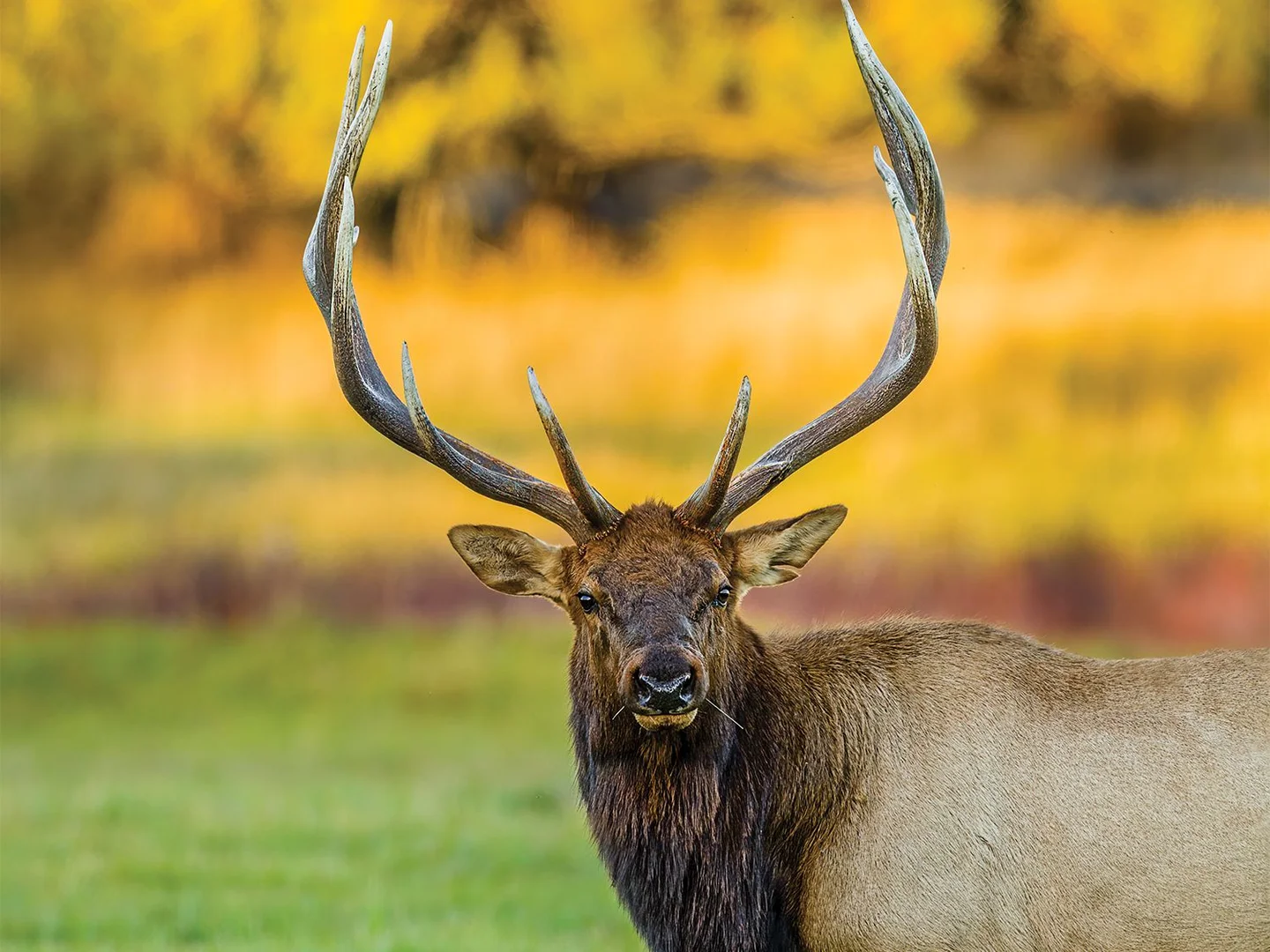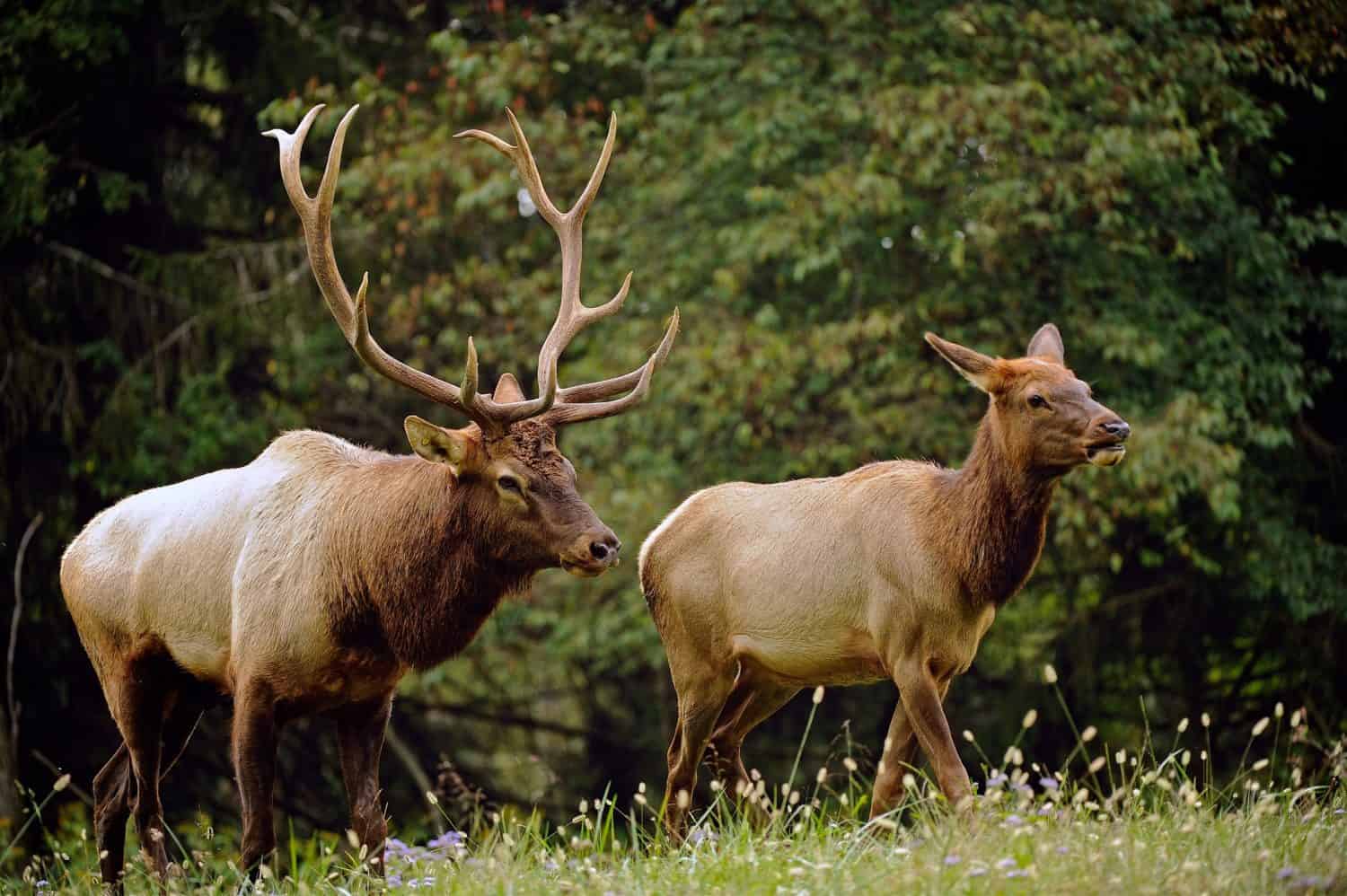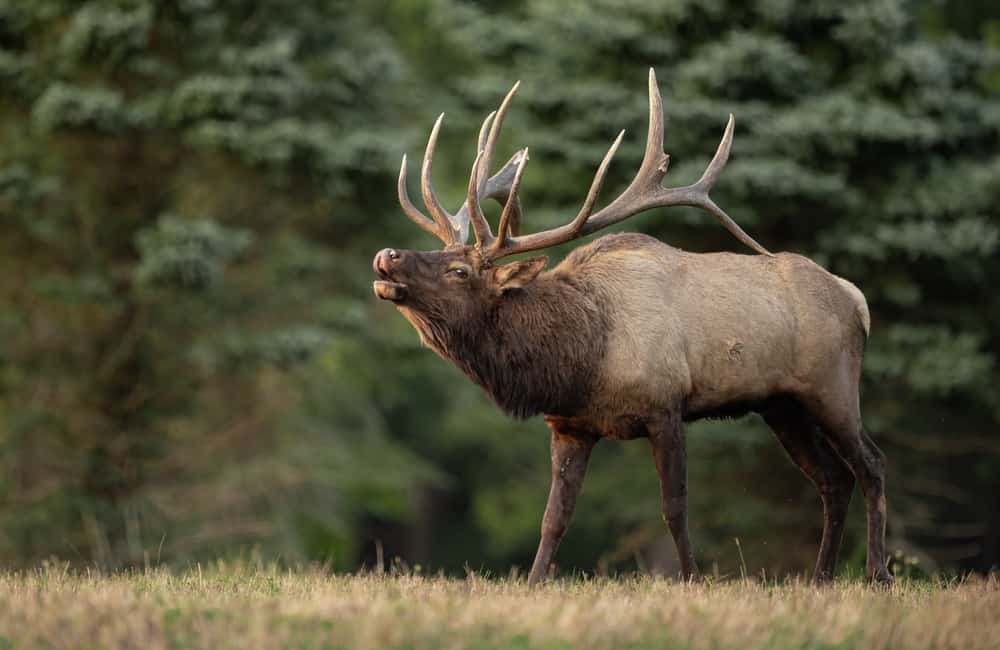As one of the largest members of the deer family in the world, elk are beautiful, majestic, and fascinating creatures. Although we love these deer for their appearance, they’re also a pivotal animal in controlling wild vegetation and are a vital food source for predators.
Suppose you’re curious about these gigantic deer and wondering what it might take to attract them into your area? In that case, we’ve some advice on what elk eat, where they live, and how best you can support them.
Habitat of elk
Although once widespread across North America, overhunting dramatically reduced the number of elk. Nowadays, most live in the western states like Wyoming and Idaho. However, several initiatives exist to reintroduce them across the country.
Elk are hardy animals that can live in a variety of different habitats. So long as there’s a supply of food, they can thrive. You can usually find them living in forests, mountains, and meadows.
During the summer, elk prefer living in higher elevated areas. In wintertime, they migrate to lower elevations.
Elk are social animals and gather in large herds, sometimes as big as 400 or so. Elk are excellent swimmers and can travel dozens of miles a day.
Farms, roads, towns, and villages have recently segregated large chunks of elk habitats. Unfortunately, herds often come in contact with livestock and humans.
How and what do elk eat?
Elk have several adaptations that make them very successful herbivores. Despite living in mountainous areas with poor soils, they have adapted to forage.
Like cattle, elk are ruminant animals with a four-chambered stomach that helps the digestion of rigid materials like plant roots, stems, and bark. Elk constantly regurgitate their food to chew it, slowly breaking it down. They have sharp canine teeth made of ivory that look like tusks and help with biting tufts of plants and flat molars to help chew them.
This slow process requires the elk to consume large quantities to get nourishment. Elk consume about 9.1 kilograms (20 lbs) of vegetation daily to keep themselves nourished.
Throughout the spring and summer months, elk are grazers. They will eat large quantities of wild vegetation from the ground.
During autumn, there are fewer plants to eat. Elk change from grazers to browsers, which means they will start to eat leaves from high branches and various shoots and fruits. As winter approaches, they will also begin to eat tree bark.
Here is a list of the most popular plants eaten by elk:
Elkweed – also known as deer ears, Elkweed is a stalky plant that can grow up to 8ft. It thrives in foothills and mountainous places. Its root has medicinal properties.
Timothy Grass – a popular choice for cattle and sheep, timothy grass is found in meadows and mountainous areas from early spring to late August.
Willow – rich in protein and bountiful throughout the summer months, willow is found around streams and water-logged paddocks. They can handle overgrazing very well.
Aspen – aspen is one of the most common tree species across America. They create dense forests, and leaves, twigs, and sprouts are highly nutritious.
Elk sedge – sedges are grass-like plants. The Elk sedge is a vital source of nutrition in the early spring months when elk need additional calcium and phosphorus.
Elk thistle – found widespread across meadows and mountain ranges elk thistle grows up to 4ft in height. It has a thick stalk, a sweet flavor, and a healthy root.
Rough Fescue – a type of bunchgrass that helps to extend the grazing season past late autumn. A vital food source for elk in winter.
Arrowleaf Groundsel – found widespread across all of America, the arrowleaf groundsel is a type of ragwort whose flowers are poisonous and can lead to vomiting. Elk eat the plant before it flowers.
Bitterbrush – considered the essential winter food for elk, bitterbrush grows an incredible 8 ft and has small, fragrant rose-like flowers.
Beargrass – nicknamed elk grass, this plant grows in rocky terrain and has a dense tuft of rough-edged leaves. Elk eat the entire flower stalk.
Serviceberry – although serviceberry produces delicious fruit, elk love to browse this tree for its twigs and bark.

Mineral licks
Another vital source of food for elk is mineral licks. These are small deposits of minerals, like salt and calcium, occurring naturally in the ground or on a rock face. Many animals like elk visit these deposits as they’re one of the few opportunities to supplement their diet with essential vitamins and minerals.
There are two critical reasons elk need mineral licks. In the springtime, males need these additional nutrients to grow strong bones, muscles, a new coat, and antlers. Mothers need minerals to produce nutritious milk for their calves.
Because they can be hard to find, some farmers and rangers place artificial ‘salt blocks’ along migration routes to help improve elk health.
Omnivores
Although often regarded as a strict herbivore, recent research suggests that elk can eat other things besides plants. After all, elks need a range of nutrients to keep their muscle mass, antler growth, and procreation.
Research suggests that elk become omnivores when their diet lacks certain nutrients; they will eat protein-rich foods like bird’s eggs, antlers, bones, and birth by-products.
Garden problems – what won’t they eat?
Many migration routes used by elk pass by towns and villages, and curious elk enter our gardens for an easy meal on their travels. They are often regarded as a significant pest because they eat plants and leave destructive marks throughout the grass.
There are several ways to keep elk away from your garden. If you’re particularly prone to invasion, fencing is your best choice.
You can plan the outside of your garden to protect your home from elk. If you know what shrubs, trees, and flowers they avoid – you can keep them walking by. Some examples include:
- Holly bushes
- Black locust
- Magnolia
- Boxwood
- Hawthorn
- Japanese maple
- Cedar
- Palm trees
- Lavender
- Lupine
- Rosemary
- Thyme

What are the predators of elk?
Elk are attractive prey for several apex predators around the world. An adult bull elk can weigh up to 700 pounds, a sizeable kill for any carnivore. Because elk often gather in large herds, there’s ample opportunity for hunting and ambushing weaker deer on the outskirts of the group.
In America, the most common predator is the wolf. Wolves can track elk over long distances because the deer often mark and scent trees to mark their territory. Because wolves usually hunt in packs, they can effectively single out elk from a herd to kill.
A famous study in Yellowstone Park explored how the overpopulation of elk destroyed several other habitats. And with no predator, their numbers spiraled. Eventually, wolves were introduced into the park to curb their numbers. Wolves were so successful at hunting elk that after their numbers fell, wildlife recovered and thrived.
Other predators include brown, black, and grizzly bears, bobcats, mountain lions, cougars, and coyotes. In Asia, Siberian tigers are also a common threat to elk.
Elk are most vulnerable to predators when they are giving birth. Females often isolate themselves to have their babies in late May to early June. They won’t have the safety and security of the herd. Babies can walk an hour after birth but won’t re-join the larger pack with their mother until they can fend for themselves in a few weeks.
Lastly, one of the other main predators of elk is humans! We hunt elk for sport, and their meat and antlers make for coveted trophies. Humans also hunt elk for more extensive ecological conservation – sometimes to cull numbers and keep populations from spiraling out of control.
Should I feed elk?
It’s generally not advised to feed or approach elk in the wild. They are large, strong, and unpredictable animals who can easily intimidate and provoke.
Elk can become quite territorial during the mating season and, if pregnant and feel threatened, will charge at you with full force.
Additionally, feeding wild Elk human food can seriously affect their health and diet, leading to several complications for the deer. Providing for them can also desensitize them to future human contact.
Elk may move closer to human settlements, farms, and roads, leading to property damage and injury. They also can carry diseases that can spread to livestock.
Suppose you want to help feed elk in a non-intrusive way? In that case, you might consider leaving salt blocks along migration trails, which can be non-intrusive ways of improving a herd’s health in a non-intrusive way. Always consult your local laws, as some states have strict regulations on feeding deer.
